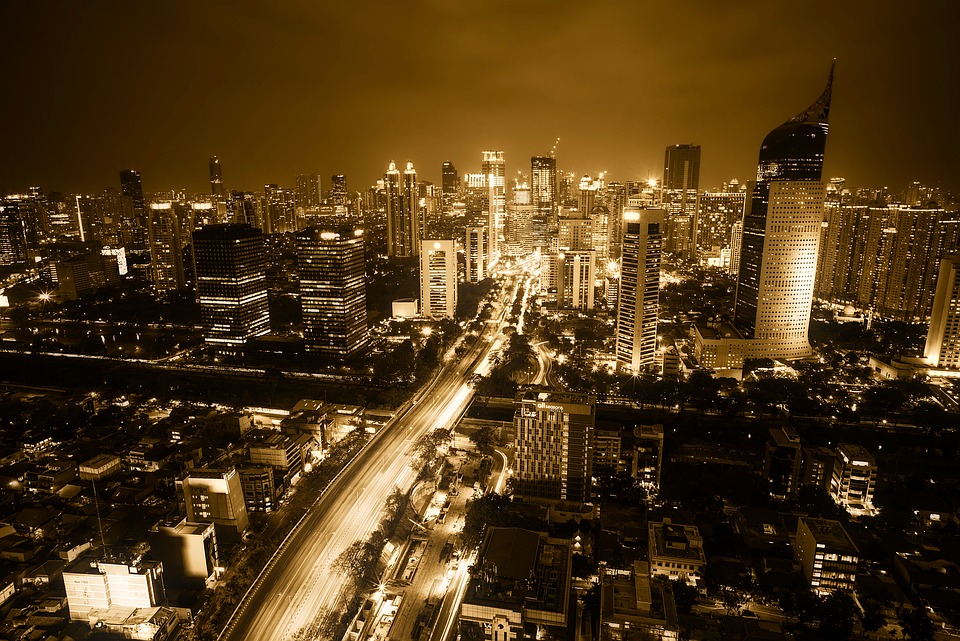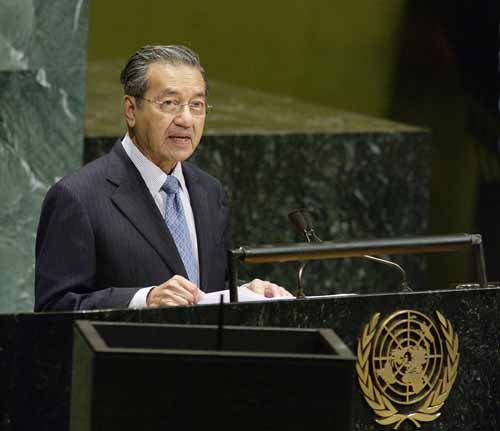In a country like the Philippines where one in four people are below the poverty line it’s no surprise that there are a lot of social problems.
According to the CIA World Fact Book the number of people living below the poverty line is 25.2%. That equates to the population of Australia. Looking further afield in the region, to other “developing” neighbours of the Philippines, the figures in the Republic cast into an even more dismal light.
Indonesia is 11.3%, Cambodia 17.7%. Even countries that have not yet fully opened up, such as Laos (22%), have a lower poverty rate than the Philippines. In fact, in my research for this article the only ASEAN member state that I could find with a higher poverty rate than the Philippines is Myanmar which is over 30%.

The Indonesians achieved independence from the Dutch on the 17th of August, 1945. Although the Dutch government did not officially ratify the date until 2005. The Philippine Revolution and the “Acta de la Proclamacion de la Independencia del Pueblo Filipino” was ratified on August 1st, 1898. Although the country was then ceded to the United States as a part of the end of the Spanish American War. It was not officially independent until after the end of the second world war (i.e. about the same time as Indonesia).
In Cambodia’s case, after one of Asia’s worst cases of genocide, the country only emerged from under the deplorable Khmer Rouge in 1979. Why is it that our neighbours seem to be doing so much in comparatively brief periods of time and yet the government of the Philippines appears unable (or perhaps unwilling) to deal with domestic poverty.

Proponents of Duterte’s bloody war on drugs might choose to blame the relatively high incidence of drug use in the Philippines. They’d be wrong. In Cambodia drugs are readily available, they’re effectively quasi-legal. With stores like “Happy Herbal Pizza” openly advertising Marijuana laced pies.
In fact, when I was living in Sihanoukville a bar in town started a promotion called the “Tuesday Smackdown.” I’ll leave that to your imagination. While the promotion was eventually stepped on by the authorities (it appears even South East Asia’s most liberal nation when it comes to drug policy has its limits), it took a lot to get them to take action.
Perhaps corruption is at the core of the poverty problem? Transparency International ranks Indonesia 90 out of 176. Cambodia is well down the list at 156. The Philippines is only 11 behind Indonesia at 101. So if it’s not drugs, nor poverty. Then what is it that’s at the core of the Republic’s abysmal situation?
Perhaps it’s the size of the economy?
GDP per capita in Cambodia is just over $1000 usd. Indonesia significantly higher at nearly $3500. Where does the Philippines fall in terms of Gross Domestic Product? A sliver under $2800. Even countries like Vietnam are doing worse than the Philippines economically, and better on the poverty front. In the last 20 years, the Vietnamese have taken the poverty rate from nearly 60 percent in the early 90s down to under 21% in 2010. Their per capita GDP remains at less than $2000 USD. It’s probably worth noting that Transparency International ranks them far lower than the Philippines at 113/176.
In fact, with comparatively high GDP for a developing nation, high levels of English, a BPO industry worth nearly $25 billion US dollars a year and firm trade relationships both regionally and further afield, the situation that the Philippines finds itself in today does not make a lot of sense at all.
Two examples in ASEAN that I haven’t cited are Malaysia and Singapore. Achieving independence from the United Kingdom in the 1960s they are arguably the two major success stories in the region. What has been achieved by Malaysia and its small island neighbour which was once a part of it is nothing short of remarkable. Malaysian per capita GDP sits at over $26,000 USD and Singapore’s at nearly $85,000.
Is it just me or is something a little bit skewiff there? Pretty much every nation in ASEAN has either colonial or tyrannical recent history. The Philippines was one of the first to shake loose the colonial yoke. It is one of only two ASEAN member states to claim English as an official language, the other being Singapore. Looking at just about every indicator, temporal, linguistic, economic and otherwise the country should be streets ahead of where it is.
So what is it? Perhaps it’s got little to do with the size of the economy, the languages spoken and corruption. Let’s take a look at the major industries in the Philippines and a few of our neighbours. Perhaps it’s got something to do with what it is that contributes to that GDP?
What makes up the Gross Domestic Product of the Philippines?
The two biggest contributors to the economy of the Philippines last year (and they were pretty well evenly matched) were offshore remittances and business process outsourcing.
Now we may be getting somewhere. While both of these make a significant difference when it comes to skills and training in the country, they do little for the domestic economy apart from providing employment. In fact, the only difference between someone sitting in a Makati call centre and a seaman aboard a container ship is that the efforts of the sailor are physically contributing to a foreign economy, while the BPO worker is doing the same thing “virtually.” Life for overseas workers can be very hard, and it can also be extremely difficult to re-integrate when they return home.
We might be getting somewhere. Let’s take a look at some of the other ASEAN states and see where their money comes from.
Dominant industries in Vietnam are all fully domestic. With Agriculture and Industry contributing 56% of GDP. If we take a look at Malaysia those two sectors are responsible for 43% of GDP, they are also responsible for 47% of employment. While the industry sector is responsible for over 33% of Philippine GDP, it only employs 15% of the population.
If we start looking at exports, which is really where we start getting down to the brass tacs of the economic conundrum, Malaysia, a nation of some 29 million people, exported 175 billion US Dollars of electronics and energy products among other things like optical and scientific equipment and vehicles. By comparision, the Philippines, with its 98 million exported a mere 58 billion dollars. Malaysia’s success is no accident. We’re about to arrive at the real reason that the Philippines seems to be such a poor cousin among its ASEAN neighbours.
What is it that Malaysia did right? Wawasan 2020. As a matter of fact, planning in general. Way back in 1991, a part of the Sixth Malaysia Plan, former priminister of Malaysia Mahitir bin Mohamad, put this plan in place. In Bahasa Malaysia wawasan translates to vision. What was the vision? For Malaysia to be a self-sufficient industrialized nation by the year 2020. Mahatir outlined 9 key challenges that the country would need to overcome in order to achieve this:
Establishing a united Malaysian nation.
Creating a psychologically liberated and secure Malaysian society.
Developing a mature democracy.
Establish a morally sound and ethical nation.
Become a matured, liberal and tolerant society.
Establishing a scientific and progressive society.
Establishing a caring society.
Ensuring that the society is economically just and that the wealth of the nation is distributed in a fair and equitable manner.
Becoming prosperous, competitive, dynamic, robust and resilient.

Mahatir is widely credited with being responsible for the rapid growth of the nation. In many of the same ways that Lee Kuan Yew was responsible for the quick development of a small island state to the south of the Malaysian peninsular.
He was in office between 1981 and 2003. While Malaysia was focusing on growth and economic development. The Philippines was under the stewardship of Ferdinand Marcos.
In spite of high levels of English language skills in the country Malaysia did not focus on exporting its skill base (in fact it could be argued that the Philippines exported not only its skilled but also its unskilled labour). Mahatir instead focused on developing the country, rather than taking any opportunity to get people employed, no matter how valuable that employment is in the long run, he focused on up-skilling, educating and establishing resilience in the economy of the country.
Of course it’s not just about good governance. I mean, some of the other countries that I’ve cited in this article have the likes of the hopelessly corrupt Hun Sen at the helm. The Vietnamese continue to be a one party state, with no signs of change on the horizon. Interestingly though, Vietnam also has a “Vision 2020” of its own. With a plan in place to become fully developed over the course of the next three years.
To wrap up, what’s the problem with the Philippines? Particularly under the current regime?
A focus on societal symptoms (such as drugs and unrest) rather than a focus on societal problems (such as poverty).
A huge historic problem with various administrations feathering their own nests (the Marcos’ for example) instead of a focus on growing the economy for the good of everyone.

Comments are closed.